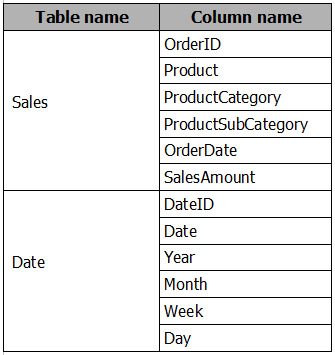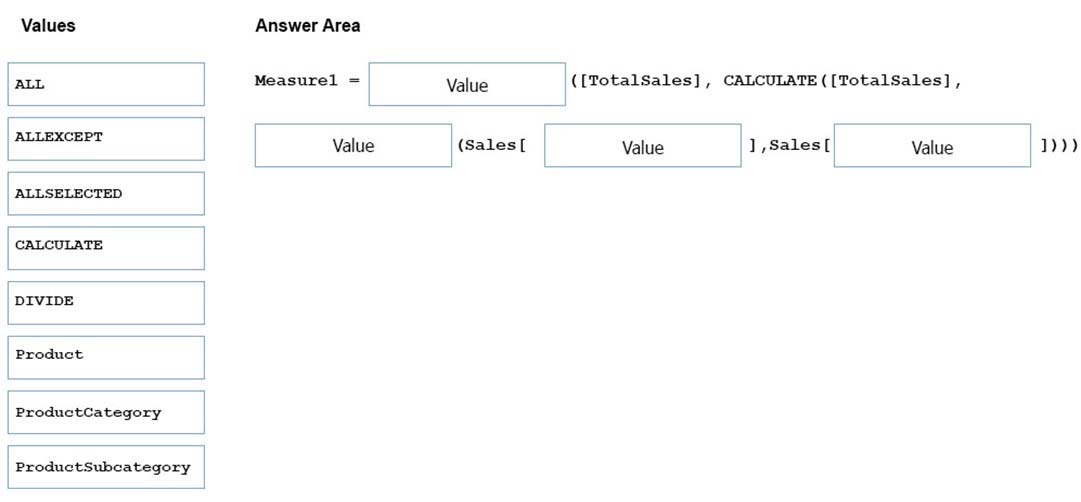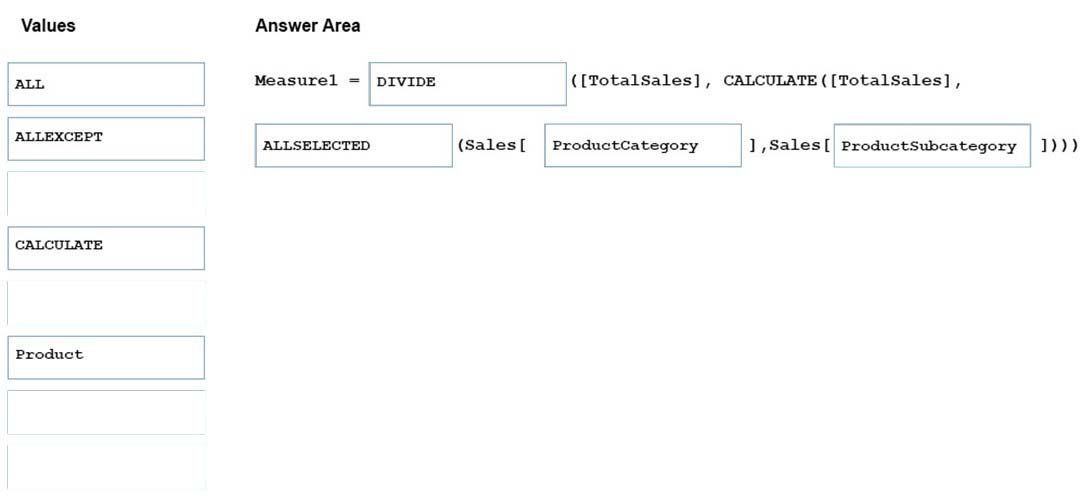

DRAG DROP -
You plan to create a report in Power BI Desktop.
You have the following tables.
You have a measure that uses the following DAX formula.
Total Sales = SUM('Sales'[SalesAmount])
You plan to create a report to display TotalSales by ProductCategory and ProductSubCategory.
You need to create a measure to calculate the percentage of TotalSales for each ProductCategory.
How should you complete the DAX formula? To answer, drag the appropriate values to the correct targets. Each value may be used once, more than once, or not at all. You may need to drag the split bar between panes or scroll to view content.
NOTE: Each correct selection is worth one point.
Select and Place:

KipngenohVinnie
1 year, 2 months agoCDL
4 years, 9 months agocromastro
4 years, 11 months agoDirk
5 years, 5 months agosiqi
5 years, 5 months agoSatyapn9
5 years agokilowd
5 years, 5 months agoAurelkb
5 years, 10 months agoJohnFan
5 years, 8 months agomiro26
1 year, 11 months ago